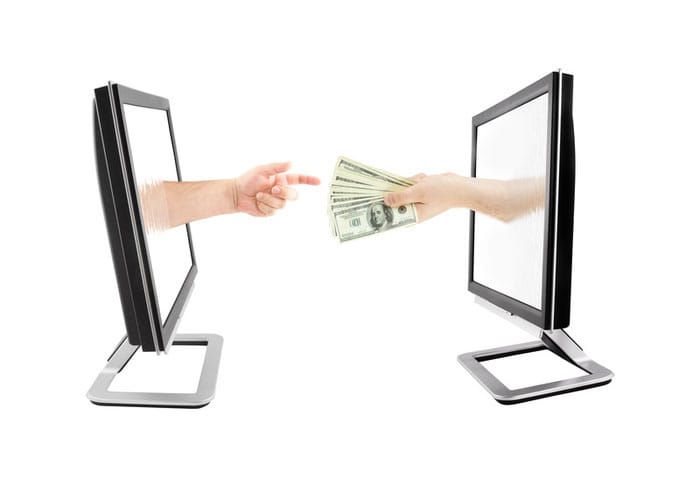
As we established in the previous instalment, Bitcoin transactions are sent from and to electronic bitcoin wallets, using digital signatures to authenticate them. Every single transaction is known to everyone on the network – although the identities of the participants are kept anonymous – and the transaction history of each Bitcoin can be traced back to the point when it was originally mined.
Although many of the bitcoin transactions in recent times have taken place between speculative traders looking for the price to go up, it is the underlying utility of bitcoins as a method of online payment that has largely driven the speculation. It is this that we shall be focusing on today.
Do bitcoins exist?
One of the most fundamental things that you need to understand about bitcoins is that they don’t really exist as such, other than in the form of a record of transactions. It is not possible to point to an object, or even a file on a hard drive, and say ‘this is a bitcoin’. Instead, every single transaction is logged on a huge decentralised ledger known as the block chain, which contains records of transactions between different addresses or ‘wallets’ and balances that can increase or decrease. In order to work out the balance of a bitcoin address, you need to reconstruct it by looking at the block chain.
Each transaction has three pieces of information:
- Input: A record of the bitcoin address(es) that the bitcoins used in the transaction previously came from.
- Amount: The amount of bitcoins that the sender is giving to the receiver.
- Output: The address the bitcoins are being sent to
In order to send bitcoins, you need a bitcoin address and a private key. Unlike bank accounts, bitcoin addresses are randomly generated sequences of letters and numbers, and anyone can get one without having to provide any ID or paperwork. The private key is a similar code made up of letters and numbers, but this is kept a secret (unlike your bitcoin address). In this way, a bitcoin address is like a safe with an impenetrable glass front, in that everyone can see what is in it, but you need the private key to take things out or put things in.
So, when you send bitcoins, you use your private key to sign a message that includes the input(s), the amount, and the output. This is then transmitted to the bitcoin network, where miners will verify the transaction, put it into the transaction block chain, and then once they have finished mining, the transaction is completed. This process can sometimes take a while, as the bitcoin protocol is set so that each block takes about 10 minutes to mine.
Some merchants require you to wait until this block has been confirmed before accepting your bitcoin transaction. Others are willing to take a chance on you, and assume that you won’t go off and spend the same bitcoins somewhere else while they are waiting for the transaction to be confirmed. This is much more common for low-value transactions where the risk of fraud is relatively small.
With the price of bitcoins increasing markedly over the last couple of years, it has become more and more necessary to divide them into smaller units. A Satoshi is one millionth of a bitcoin, and at present the smallest transaction you can send on the network is 5430 satoshis (0.00543 bitcoins) – currently just over $2. However, this may well change in the near future, especially if the price of bitcoins remains high.
Transaction fees and receipts
Although transaction fees are not mandatory when using bitcoin, they are fairly common, and are calculated using a number of different factors. Some wallets will allow you to manually set transaction fees, and any part of the transaction that is returned as change or is not picked up by the recipient can be considered a transaction fee. This goes to the miner that solves that transaction block as an added reward. Although many miners do not currently charge for processing transactions, this is likely to change in the near future as the block reward for mining bitcoins decreases.
Until relatively recently, the way in which transaction fees were calculated was incredibly complex and difficult for non-mathematicians to understand. However, recent updates to the protocol have seen changes to the way it handles transaction fees, and it now estimates the lowest fee that will be accepted by the miner.
Although there is no native functionality in bitcoin to produce receipts – it wasn’t really designed for this purpose – there are changes on the way that will alter the way that payments work to make them more user-friendly and acceptable to the mainstream. You can also use payment processors such as BitPay to add on additional features such as receipts and order confirmations that you don’t get with native bitcoin transactions.
Other articles in this series
Guide to Crypto-Currencies Part 1 – Introduction
Guide to Crypto-Currencies Part 2 – The Bitcoin Bubble
Guide to Crypto-Currencies Part 3 – How Bitcoins Work
Guide to Crypto-Currencies Part 4 – Bitcoin Mining
Guide to Crypto-Currencies Part 6 – The Problem(s) With Bitcoin
Guide to Crypto-Currencies Part 7 – Solutions to Volatility
Guide to Crypto-Currencies Part 8 – Security Issues
Guide to Crypto-Currencies Part 9 – Bitcoin Alternatives
Guide to Crypto-Currencies Part 10 – The Future of Money?
Tradersdna is a leading digital and social media platform for traders and investors. Tradersdna offers premiere resources for trading and investing education, digital resources for personal finance, market analysis and free trading guides. More about TradersDNA Features: What Does It Take to Become an Aggressive Trader? | Everything You Need to Know About White Label Trading Software | Advantages of Automated Forex Trading








